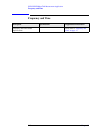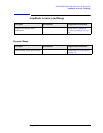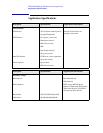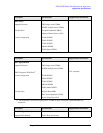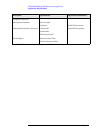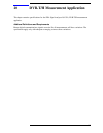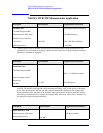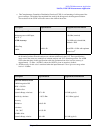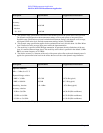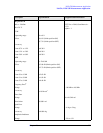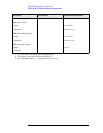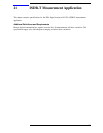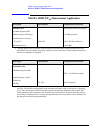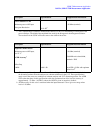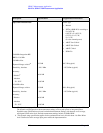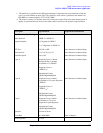
220 Chapter 20
DVB-T/H Measurement Application
N6153A, DVB-T/H Measurements Application
Sensitivity, absolute –105.5 dBm –111.5 dBm (typical)
Accuracy
Relative ±0.63 dB
Absolute
20 – 30°C ±1.05 dB
a. The dynamic range specification is the ratio of the channel power to the power in the offset specified.
The dynamic range depends on the measurement settings, such as peak power or integrated power.
Dynamic range specifications are based on default measurement settings, with detector set to average,
and depend on the mixer level. Default measurement settings include 3.9 kHz RBW.
b. This dynamic range specification applies for the optimum mixer level, which is about –16 dBm. Mixer
level is defined to be the average input power minus the input attenuation.
c. The sensitivity is specified with 0 dB input attenuation. It represents the noise limitations of the ana-
lyzer. It is tested without an input signal. The sensitivity at this offset is specified in the default 3.9 kHz
RBW, at a center frequency of 474 MHz.
d. The relative accuracy is a measure of the ratio of the power at the offset to the main channel power. It
applies for spectrum emission levels in the offsets that are well above the dynamic range limitation.
Description Specifications Supplemental Information
Spurious Emission
ML
a
= 3 dBm; 0 to 55 °C
a. ML (mixer level) is RF input power minus attenuation
Dynamic Range, relative
RBW = 3.9 kHz 102.5 dB 107.8 dB (typical)
RBW = 100 kHz 88.5 dB 93.7 dB (typical)
Sensitivity, absolute –81.4 dBm –87.4 dBm (typical)
Accuracy, absolute
20 Hz to 3.6 GHz ±0.38 dB (95th confidence)
3.5 GHz to 8.4 GHz ±1.22 dB (95th confidence)
8.3 GHz to 13.6 GHz ±1.59 dB (95th confidence)
Description Specifications Supplemental Information



